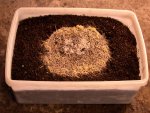kenya_1977
New member
- Joined
- May 7, 2007
- Messages
- 17
- Reaction score
- 1
- Points
- 3
- Location
- Knoxville, TN
- Country
- United States
- Display Name
- Crystal
So, I've got 7 cultures going of 15X20X5 bins of white worms going. I've been using expanded coco fiber as bedding for it and feeding fortified fish food (wanting to gutload for my fish), and I get ok production, but not great response and it seems to foul out in a month with not that many worms in it. I've decided to go with the "Magic Worm Bedding" and see if that makes a difference. But, I'm wanting to keep nutrition high along with production and reduced maintenance. Any suggestions?

